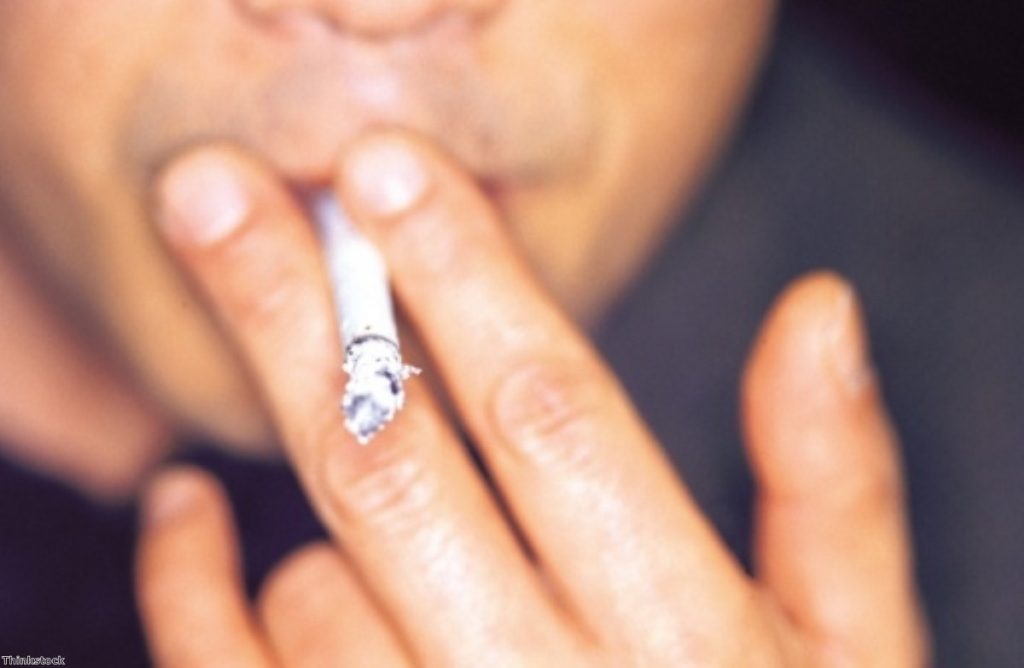Black Mamba: The truth about drugs in jail
For the first time since the coalition came to power, there has been a rise in positive drug tests in prison. This week's release of the Prison Performance Digest 2013/14 shows positive results jumped from seven per cent to 7.4%.
HMP Brixton was the worst, with 19.6% of inmates testing positive, followed by Birmingham with 18.3% and Liverpool with 17.4%.
The idea that one in fifteen prisoners is on drugs doesn't seem too bad. And it comes as part of long-term decline in drug use, from 18.3% in 1998. But the mandatory drug tests used to provide the figures don't tell the whole story. In fact, they are a part of the story themselves. These tests create a perverse incentive in the prison system, pushing users towards untraceable legal highs which are actually more dangerous than many of the illegal drugs they would otherwise use.
The most popular drugs in jails are heroin and cannabis, which are both smoked. There is too much paraphernalia involved in injections for that to be a viable option. The drugs are popular partly because they are well suited for whiling away boredom, a key quality if you are locked in a cell for 23 hours a day.


Tabloids sometimes enjoy imagining lots of people taking LSD in prison. No-one with any understanding of what LSD does would think that was a realistic prospect.
Back in the 1970s and 80s, prison wardens didn't really mind prisoners smoking weed. The truth is, weed does not create troublemakers. It creates relatively docile individuals, happy to while away the hours doing very little. It helped inmates with boredom and wardens with order.
Then mandatory drug testing was introduced across the prison estate in 1996. It’s first effect was to push cannabis users towards heroin, which is detectable in urine for just two days, far less than weed's 28 days.
Then came legal highs. Black Mamba is particularly popular. It is created, like most of these synthetic cannabis drugs, by spraying chemical compounds onto herbs. We don’t really know what these chemicals are, but in open prisons, where use is very high, the periodic arrival of ambulances to take prisoners having fits into observation have become so common that inmates have dubbed them 'Mambulances'. Mamba is now the generic term for legal highs.
The trouble is that for prisoners on an 'income' of £9 a week, a Mamba habit, in addition to a likely cigarette habit, is unaffordable. They very frequently get into debt and are beaten or turned into smugglers for the dealers. Some are sexually exploited. Some even request a return to a closed prison.
The press is starting to pick up on the use of legal highs behind bars. A Mirror report into it was completely over the top and hysterical, warning of inmates primed to kill guards while raging under some new Akira-type narcotic. It was also well behind the curve. Spice has not been the synthetic cannabis of choice for some time.
Truth is, there's going to be an increase in drug availability in prison of both the legal and the illegal sort when you cut down on prison officer numbers. It doesn’t take a rigorous analytical mind to see that, although it is not surprising that Chris Grayling failed to do so.
Addiction treatment centres are also less available than they used to be, leaving many prisoners emerging from incarceration with an addiction they didn't have when they went in.
Without proper funding for experienced prison staff, addiction treatment centres and decent rehabilitation programmes, drug use in prison will continue, regardless of the tests imposed to control it.
Update: 16:54 BST
Prisons minister Andrew Selous said: "We do not tolerate drugs in prison and anyone caught with them will be punished and could face further prosecution.
"We are working hard to tackle this issue and levels of positive drug tests remain lower under this government than they were under the previous one.
"All prisons are properly staffed to ensure prisoners are managed safely and the public is protected – to suggest otherwise is entirely misleading."

